Medical expert of the article
New publications
Preparations
Pills for stomach ulcers
Last reviewed: 04.07.2025

All iLive content is medically reviewed or fact checked to ensure as much factual accuracy as possible.
We have strict sourcing guidelines and only link to reputable media sites, academic research institutions and, whenever possible, medically peer reviewed studies. Note that the numbers in parentheses ([1], [2], etc.) are clickable links to these studies.
If you feel that any of our content is inaccurate, out-of-date, or otherwise questionable, please select it and press Ctrl + Enter.
In the drug treatment of gastroenterological diseases accompanied by a violation of the integrity of the mucous membranes, tablets for stomach ulcers with various pharmacological effects are used.
Indications pills for stomach ulcers
The main indications for the use of these drugs: gastric and duodenal ulcers (peptic and bacterial); acute and chronic gastritis; duodenitis and gastroduodenitis; esophagitis and gastroesophageal reflux disease; ulcerogenic gastrinoma (including Zollinger-Ellison syndrome), acid aspiration syndrome, and other benign erosive and ulcerative gastrointestinal pathologies. Many drugs in this category can be used to prevent relapses of peptic ulcers and prevent stress ulcers and gastritis.
Names of pills for stomach ulcers
When prescribing certain pills for stomach ulcers, gastroenterologists are guided not only by the presence of symptoms of the disease, but also by the results of an ultrasound examination of patients, as well as a laboratory study of the composition of gastric juice and blood for the presence of antibodies to Helicobacter pylori, which penetrates the mucous membrane of the stomach and duodenum.
We remind you that in the list of drugs, their synonyms or generics (other trade names of these medicines from different manufacturers) are indicated in brackets.
The names of pills for stomach ulcers can be grouped depending on their therapeutic effect and its biochemical mechanism:
- drugs that block H2-histamine receptors: Axid (Nizatidine), Quamatel (Famotidine, Antodin, Acipep, Gastrogen, etc.), Zantac (Ranitidine, Ranigast, Ulkodine, etc.), Histodil (Cimetidine, Simetidine, Tagamet, Ulceratil, etc.);
- proton pump inhibitors: Omeprazole (Omeprol, Ocid, Omez, Omitox, Gastrozol, Losek MAPS, Promez, Pleom-20, etc.), Sanpraz (Pantoprazole, Kontrolok, Nolpaza, etc.);
- acetylcholine receptor blockers or m-cholinergic receptors: Gastrocepin (Pirenzepine, Gastril, Riabal, etc.), Bruscopan (Neoscapan, Spazmobru), preparations with belladonna extract - Bellacehol, Besalol, Becarbon, etc.;
- agents that help protect the affected mucous membrane: De-Nol (Bismuth subcitrate, Ventrisol, Gastro-norm, Bismofalk), Cytotec (Misoprostol, Cytotec), Liquiriton;
- antacids (neutralizers of hydrochloric acid in gastric juice): Calcium carbonate (Vikaltsin, Upsavit calcium), Gastal (Maalox), Gelusil (Simaldrat), Compensan (Carbaldrat);
- drugs that promote the restoration of the mucous membrane: Methyluracil (Metacil, Amigluracil) and Gastrofarm.
For the eradication (destruction) of Helicobacter pylori, antibiotics such as Azitral (Azithromycin, Sumamed, Azitrox, Azitrus, etc.) and Clarbact (Clarithromycin, Klacid, Fromilid, Aziklar, etc.) are used.
Painkillers for stomach ulcers include No-shpa and all preparations based on belladonna alkaloids, as well as the above-mentioned m-cholinergic receptor blockers.
And why the neuroleptic Betamax (Sulpiride) can be prescribed for stomach ulcers, you will find out at the end of the material.
Tablets for stomach ulcers that reduce the secretion of hydrochloric acid
Pharmacodynamics of oral tablets Aksid, Kvamatel (Antodin), Zantac, Gistodil, which are part of the group of histamine H2 antagonists, is associated with the fact that their active components (respectively - nizatidine, famotidine, ranitidine and cimetidine), acting on the histamine receptors of mast cells of the gastrointestinal mucosa, prevent the activation of histamine type II (as well as gastrin, pepsin and acetylcholine). This inhibits the secretion of hydrochloric acid in the stomach.
But the pharmacokinetics of these drugs has its own peculiarities. Nizatidine, the active substance of Aksid tablets, after absorption in the gastrointestinal tract, reaches its maximum level in blood plasma on average in 1.5-2 hours and binds to its proteins by 35%; it is transformed in the liver and excreted through the kidneys.
Quamatel and Antodin, which contain famotidine, bind to plasma proteins worse (no more than 20%), their bioavailability is about 45%. Oxidation in the kidneys ends with the production of sulfur-containing metabolites, which are excreted in the urine.
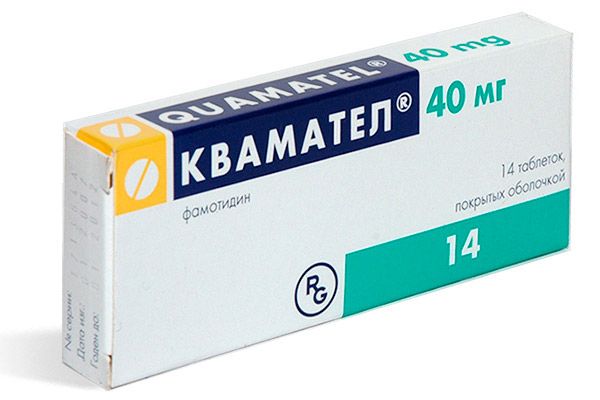
After taking Zantac tablets, ranitidine is absorbed in the gastrointestinal tract, and 15% of the substance binds to plasma proteins, providing 50% bioavailability of the drug. Metabolites are excreted by the kidneys and lungs.
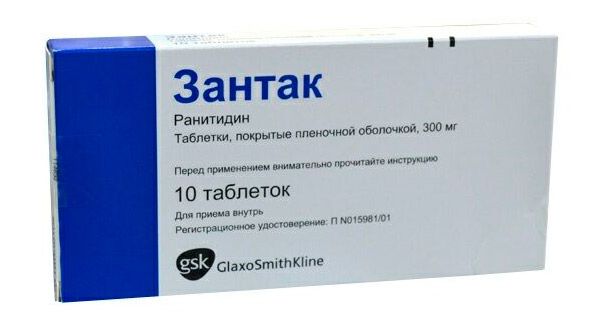
Up to 20% of cimetidine, the active substance of Histodil tablets, binds to plasma proteins; the drug is excreted from the body in the urine (almost half in its original form).
Contraindications to the use of histamine H2 antagonists, in addition to hypersensitivity, include age under 12 years (Histodil - under 14 years), as well as liver and/or kidney dysfunction. In addition, drugs that block H2-histamine receptors are contraindicated for use during pregnancy.
Side effects of the listed drugs may include hypotension, cardiac arrhythmia, nausea, dry mouth, diarrhea or constipation, skin rashes and hair loss, bronchospasms, muscle pain, and temporary confusion. These stomach ulcer pills can cause temporary loss of libido and impotence.
Method of administration and dosage of tablets for stomach ulcers:
Axid and Zantac – 0.15 g twice a day (morning and evening) or 0.3 g once a day;
Quamatel – 0.02 g twice a day or a single dose of 0.04 g (in the evening); the maximum duration of administration is two months.
Histodil should be taken 200 mg up to three times a day (for the prevention of relapse – 200 mg once).
The instructions do not describe overdose of these drugs.
Interacting with other drugs, famotidine in Kvamatel tablets reduces the absorption of imidazole antifungal agents, and Histodil reduces the effectiveness of thyroid drugs containing L-thyroxine. At the same time, Histodil leads to an increase in plasma concentrations of tricyclic antidepressants; opioid drugs; muscle relaxants and tranquilizers of the benzodiazepine group; hypotensive drugs based on nifedipine; indirect anticoagulants and anthelmintics.
Storage conditions for Aksid, Kvamatel, Zantac, Histodil tablets suggest a temperature not exceeding +27°C. Their shelf life is 3 years.
A pronounced and long-term reduction in the production of gastric acid is provided by pills for stomach ulcers, which belong to the group of proton pump inhibitors (PPI): Omeprazole (Ocid, Omitox, Losek Maps, Pleom-20) and Sanpraz.
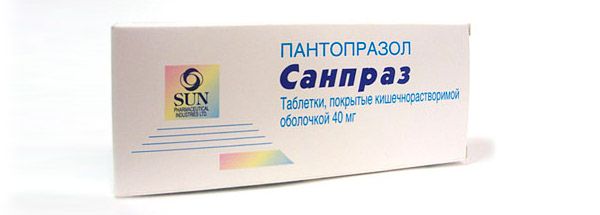
The antisecretory effect of these tablets is due to the fact that weakly alkaline active substances (omeprazole and pantoprazole), entering the parietal cells of the stomach, bind hydrogen cations of the enzyme hydrogen-potassium adenosine triphosphatase (H+/K+-ATPase), which is called a proton pump. This enzyme catalyzes the reaction of hydrochloric acid synthesis, and its blockade leads to a significant slowdown in this reaction, and then to the relief of pain in the stomach and the cessation of heartburn.
There are differences in the pharmacokinetics of these drugs. The maximum concentration of Omeprazole in blood plasma is observed on average 3-4.5 hours after oral administration, and its bioavailability is no higher than 45%. The active substance of Sanpraz tablets reaches peak plasma content after 2.5 hours, and the bioavailability of the drug exceeds 75%. Both drugs are metabolized in the liver, Omeprazole and its metabolites are excreted from the body with urine, Sanpraz - by the kidneys and through the intestines.
Contraindications for use: age under 12 years and the presence of oncological pathologies. During pregnancy, the use of Omeprazole and Sanpraz tablets for stomach ulcers is not practiced.
Side effects of Omeprazole and Sanpraz tablets include headaches and epigastric pain, nausea, diarrhea or constipation, bloating, weakness and dizziness, sleep disorders, skin allergic reactions, hyperhidrosis, anxiety and depression. The use of these drugs can also cause intense myopathy associated with the destruction of muscle cells (rhabdomyolysis).
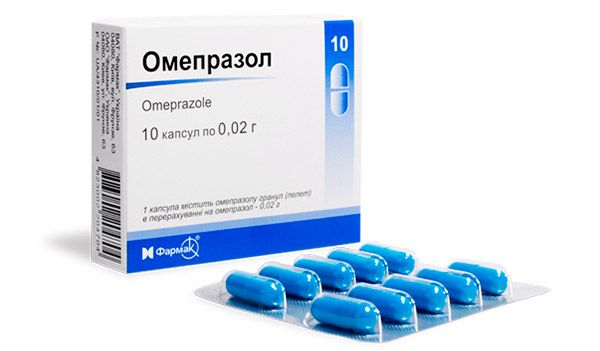
Omeprazole is taken once a day at 20 mg (in the morning, on an empty stomach, with a glass of water); treatment continues for 14-28 days. The daily dose of Sanpraz is 20-40 mg (taken as Omeprazole); the course of treatment is three weeks.
There is no information on exceeding the dosage of Sanpraz, and an overdose of Omeprazole causes increased side effects.
Interactions of pantoprazole tablets with other drugs have not been indicated; the simultaneous use of Omeprazole and systemic antifungals reduces the effectiveness of the latter.
Storage conditions: t< 25°С, shelf life – 36 months.
Tablets for stomach ulcers to protect the mucous membrane
Pharmacodynamics of the gastroprotective action of De-Nol (Ventrisol) tablets is provided by bismuth tripotassium dicitrate (subcitrate). Having electronegative ionization, this chemical compound after entering the stomach inhibits the proteolytic activity of pepsin and binds mucin glycoproteins, forming a diffusion barrier for HCl on the gastric mucosa, which promotes ulcer healing. There is also a more active production of prostaglandin E2 with subsequent secretion of alkaline components of the gastric mucosa. Bismuth has a bactericidal effect on Helicobacter.
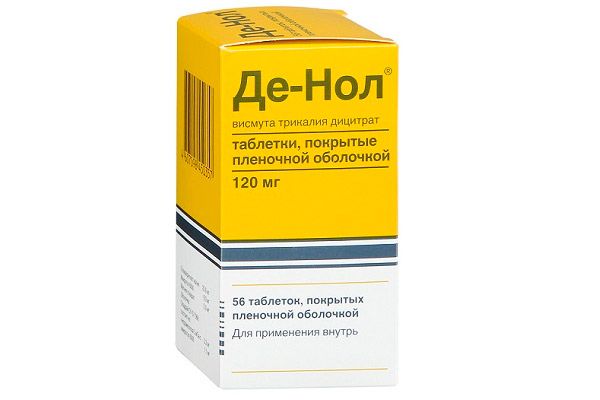
Misoprostol, a synthetic derivative of prostaglandin PgE1 in Cytotec tablets, is broken down in the stomach, releasing active misoprostol acid, which, by stimulating PgE1 receptors of acid-producing cells in the stomach, reduces their secretory activity.
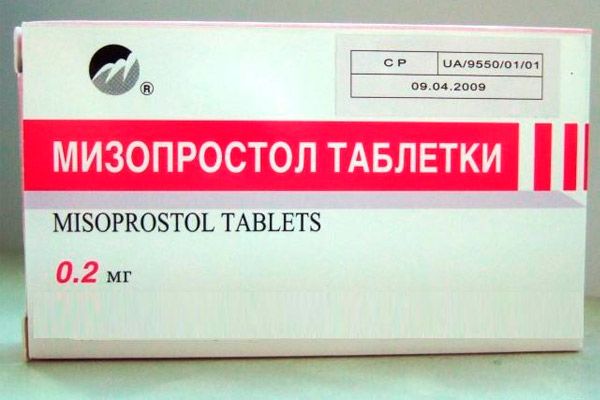
The action of Liquiriton tablets, as stated by the manufacturers, consists of the ability of biologically active substances in licorice roots to relieve spasms and inflammation by stimulating mucus secretion.
A small part of the split bismuth that got from the gastrointestinal tract into the blood after taking De-Nol is excreted by the kidneys, and subcytate - through the intestines. Cytotec is absorbed into the blood, and almost 90% of misoprostol binds to plasma proteins; the excretion of metabolic products (with urine and feces) lasts about a day.
The pharmacokinetics of the drug Liquiriton are not described in the instructions.
Contraindications for the use of De-Nol (Ventrisol) are functional renal failure, age under 14 years; Cytotec is contraindicated in serious cardiac and nephrological diseases, hypertension, glaucoma, diabetes mellitus, bronchial asthma; it is not prescribed to patients under 18 years of age.
The use of De-Nol and Cytotec tablets during pregnancy is contraindicated (Cytotec causes termination of pregnancy).
Side effects of these drugs include nausea, vomiting, diarrhea or constipation, skin rashes. Bismuth can cause brain damage.
Method of administration and dosage of De-Nol: 1-2 tablets (0.12 g) half an hour before breakfast, lunch and before bed. You should eat or drink liquid no earlier than 30 minutes after taking the tablets.
Cytotec is taken three times a day during meals - one tablet (0.2 mg). Liquiriton is taken before meals - three times a day, 0.1-0.2 g (1-2 tablets), the course of treatment is 30-40 days.
Overdose of De-Nol can cause intoxication with bismuth compounds with damage to the liver, kidneys, nervous tissue, thyroid gland. In such cases, laxatives and hemodialysis (in severe cases of poisoning) are recommended.
It should be taken into account that De-Nol is incompatible with antacids, and Cytotec is incompatible with NSAIDs.
These tablets can be stored at room temperature; the shelf life of De-Nol is 4 years, Liquiriton – 3 years, Cytotec – 2 years.
Tablets for stomach ulcers that neutralize hydrochloric acid
Among antacids – means of neutralizing hydrochloric acid of digestive juice – there are absorbable and non-absorbable drugs. All of them reduce the level of acidity of the stomach in a fairly simple chemical way.
Calcium carbonate tablets are calcium salt of carbonic acid, which reacts with hydrochloric acid to release carbon monoxide, water and Ca 2+. Gastal contains aluminum hydroxide, carbonate and magnesium oxide; Gelusil is almasilate (simaldrat); Compensan is sodium salt of dihydroxyaluminum carbonate. Unlike calcium carbonate, these substances are not absorbed in the stomach, but alkalize its environment and form gels that envelop the mucous membrane, adsorbing part of the hydrochloric acid and pepsin. This relieves heartburn and eases stomach pain in ulcers.
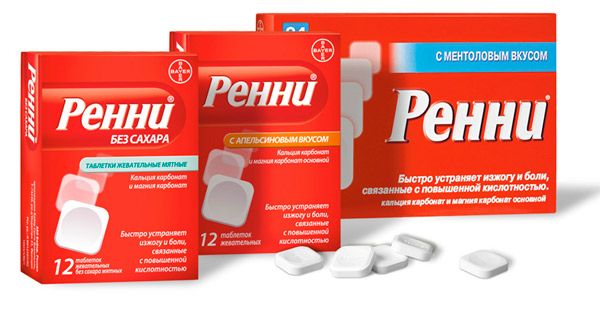
Contraindications to the use of Calcium Carbonate tablets include hypercalcemia, kidney stones and chronic renal failure. If you have kidney problems, you should not take Gastal, Gelusil and Compensan. They are also contraindicated for use during pregnancy.
Side effects of Calcium carbonate: calcium ions (Ca 2+ ) stimulate the synthesis of the hormone gastrin by the endocrine cells of the stomach, which leads to secondary production of hydrochloric acid and pain in the epigastric region. Excess calcium in the body (hypercalcemia) may also occur, leading to constipation, nephrolithiasis, tissue calcification and alkalosis.
Gastal, Gelusil, Compensan contain aluminum compounds, which leads to side effects such as disruption of phosphate metabolism in the body and “aluminum” intoxication, affecting bones and brain tissue.
- Dosage of calcium carbonate – up to three times a day, 1-2 tablets (0.25-0.05 g);
- Gastal – 4 times a day, 1-2 tablets, without chewing (60 minutes after meals);
- Gelusil – 1 tablet 3-5 times a day (one hour after meals, tablets should be chewed);
- Compensan – up to 4 times a day, 1-2 tablets (between meals and in the evening).
Excessive doses of Calcium Carbonate may cause headaches and muscle pain; general weakness; nausea and vomiting, constipation and frequent urination, as well as tachycardia and renal dysfunction.
Interactions with other drugs are expressed in the reduction of absorption by antacids of any drugs used simultaneously with them.
Antacids are stored at room temperature; the expiration date of the drugs is indicated on the packaging.
Painkiller tablets for stomach ulcers
Due to the specific biochemical effects, drugs from the group of metabotropic cholinergic receptor blockers (m-anticholinergics) – Gastrocepin, Bruscopan, Bellacehol – are recommended by specialists as painkillers for stomach ulcers.
The action of these tablets is based on the fact that their pharmacologically active substances pirenzepine dihydrochloride, butylscopolamine and atropine alkaloids contained in the belladonna extract block peripheral muscarinic receptors (m-cholinergic receptors) of neurons, which leads to a reduction in the release of acetylcholine from the postganglionic fibers of the parasympathetic nervous system. As a result, there is a deactivation of the secretory function (synthesis of gastric enzymes and acid) and a decrease in muscle tone and motility of the stomach (and the entire gastrointestinal tract).
The pharmacokinetics of Bruscopan and Bellacehol tablets have not been described, and Gastrocepin is poorly absorbed in the gastrointestinal tract and is almost not broken down; the bioavailability of pirenzepine dihydrochloride does not exceed 30%. The drug is excreted in the feces approximately 24 hours after administration.
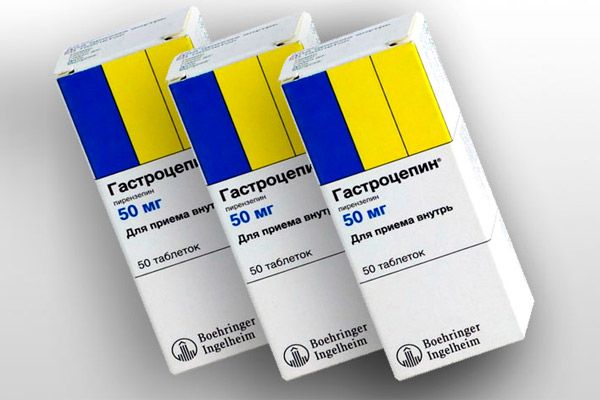
Contraindications to the use of drugs in this group: childhood, glaucoma, prostatic hyperplasia, ulcerative colitis, hypotension, chronic heart failure with tachyarrhythmia.
The use of stomach ulcer tablets with belladonna extract and hyoscyamine derivatives during pregnancy is contraindicated.
Side effects of these drugs include headaches, dilated pupils, dry mouth, constipation, increased heart rate, dysuria, and skin reactions.
The tablets are taken orally, at least half an hour before meals: Gastrocepin - 0.05 g twice a day; Bruscopan - three times a day, 10-20 mg (1-2 tablets); Bellacehol - 1 tablet 3-4 times a day.
Overdosing on these pills will result in increased side effects.
All anticholinergic agents potentiate each other and enhance the effect of antihistamines and neurotropic drugs.
The storage conditions for the listed medicines are normal, the shelf life is 3 years.
For information on the drugs Drotaverine hydrochloride and No-shpa, recommended as painkillers for stomach ulcers, see the publication - Tablets for stomach pain
 [ 5 ], [ 6 ], [ 7 ], [ 8 ], [ 9 ], [ 10 ]
[ 5 ], [ 6 ], [ 7 ], [ 8 ], [ 9 ], [ 10 ]
Tablets for stomach ulcers that regenerate the mucous membrane
Reparative regeneration of the ulcerated mucosa of the stomach and duodenum is facilitated by such pills for stomach ulcers as Caleflon (with calendula flower extract), Alanton (with elecampane extract), Pantaklyucin (with plantain extract), Potassium Orotate, as well as Methyluracil and Gastrofarm.
A derivative of pyrimidine (a biologically active aromatic heterocyclic compound containing nitrogen) – 2,4-dihydroxy-6-methylpyrimidine, which is the active substance of Methyluracil tablets, stimulates oxidation-reduction processes in tissues, which helps improve their nutrition and accelerates the healing of ulcers.
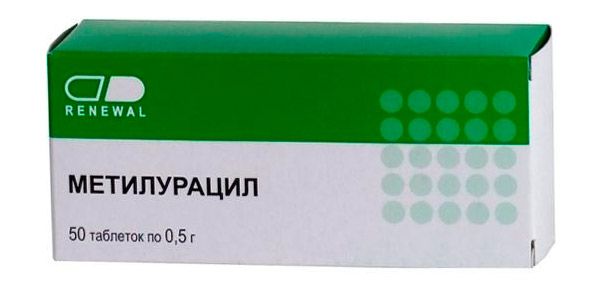
The pharmacodynamics of the drug Gastrofarm is based on the immunostimulating effect of the lyophilisate of such a type of lactobacilli as the Bulgarian bacillus (Lactobacillus vulgaricus).
The main contraindications for the use of Methyluracil are oncological diseases of the blood, lymphoid tissue and bone marrow. Gastrofarm is not used in case of hypersensitivity to the ingredients of the drug.

When using Methyluracil, side effects such as headache and skin rash may occur.
According to the instructions, Gastropharm should be taken orally 1-2 tablets three times a day (half an hour before meals), and Methyluracil - in the same dosage 4-5 times a day. It should be taken into account that when taken simultaneously with antibacterial drugs, Methyluracil enhances their effect.
Storage conditions for these preparations: away from moisture and sunlight, at t< 20°C; the expiration date is indicated on the packaging.
Pills for stomach ulcers that destroy Helicobacter pylori
In the treatment of stomach ulcers, a combination of drugs is often used, in which antibiotics are used to eliminate Helicobacter pylori, which is introduced into the mucous membrane of the pyloric section of the stomach and the duodenal bulb.
The pharmacodynamics of the azalide antibiotic Azitral (Azithromycin, Azitrus, Azicid, Sumamed, etc.) and the macrolide antibiotic Clarbact (Clarithromycin, Klacid, Aziclar, Fromilid, etc.) consists of interaction with the RNA molecules of microorganisms, which leads to inhibition of the biosynthesis of amino acids and proteins in their cells and cessation of growth and reproduction.
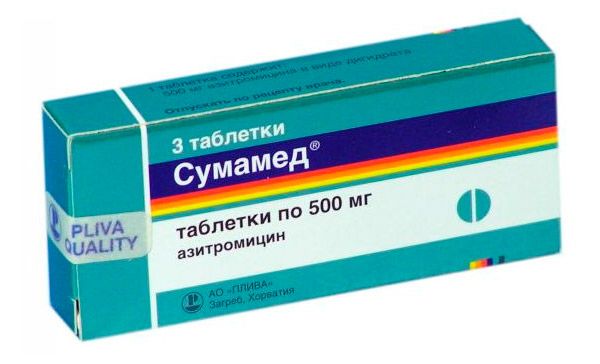
The pharmacokinetics of these drugs have both similarities and differences: after taking a tablet orally, the drugs are quickly absorbed in the stomach (the drug is acid-resistant) and enter the blood and tissues; after approximately 2-3 hours, the maximum level of azithromycin or clarithromycin in the plasma is noted.
Due to its ability to accumulate in leukocytes, Azitrus (Azicid) acts gradually, so it can be taken for only three days. Biotransformation occurs in the liver, metabolites are excreted by the intestines and kidneys.
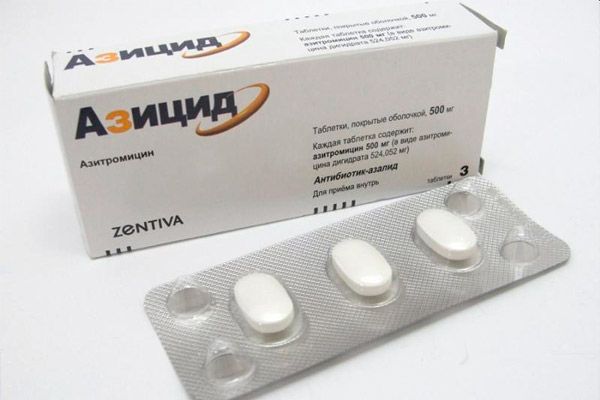
Clarithromycin (Fromilid) binds more to plasma proteins (almost 90%), and the process of maximum plasma concentration occurs in two stages (capturing the gallbladder intestine). Therefore, it is considered the most effective antibiotic against H. pylori. The drug and its metabolites are excreted in urine and feces.
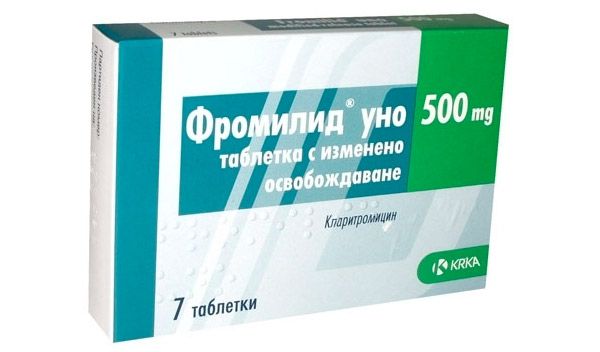
Contraindications for the use of Azitral: age under 16, serious kidney and liver pathologies, heart failure.
Contraindications for the use of Clarbact: age under 12 years, hypersensitivity to Clarithromycin.
The use of azalide antibiotics during pregnancy can be prescribed by a doctor only taking into account the ratio of expected benefits to the mother and risks to the fetus. Clarbact (Clarithromycin) is prohibited for use during the first trimester.
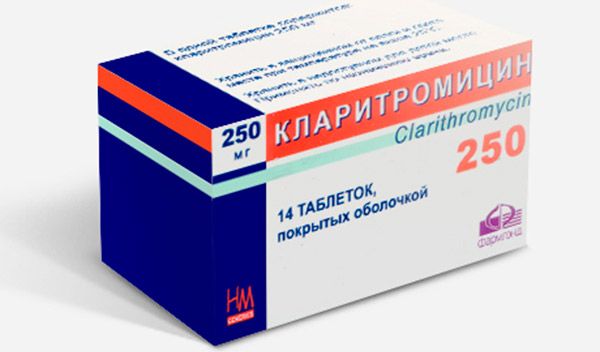
Possible side effects of these medications include nausea, abdominal pain, vomiting, bowel disturbances, increased heart rate, headache, sleep problems, and some mental changes.
Method of administration and dosage (for eradication of H. pylori): Azitral - 1 g once a day; duration of administration - three days; Clarbact - 0.5 g twice a day (for 10-14 days). Overdose of drugs leads to increased side effects, primarily from the gastrointestinal tract.
Antibiotics should be taken separately from antacids (two hours before or after taking the antacid drug). Azitral and Clarbact are incompatible with heparin preparations and α-adrenoblockers containing ergot alkaloids and their derivatives, as well as with increased action of indirect anticoagulants (when used together).
Storage conditions are normal; shelf life of Azitral is 3 years, Clarbact is 2 years.
And now it's time to answer the question of why gastroenterologists use Betamax (Sulpiride) tablets in the treatment of stomach ulcers. This drug is an atypical antipsychotic (neuroleptic) based on substituted benzamides. These substances temporarily "switch off" dopamine, serotonin and acetylcholine receptors in a specific way (m-cholinergic receptor blockers were discussed above).
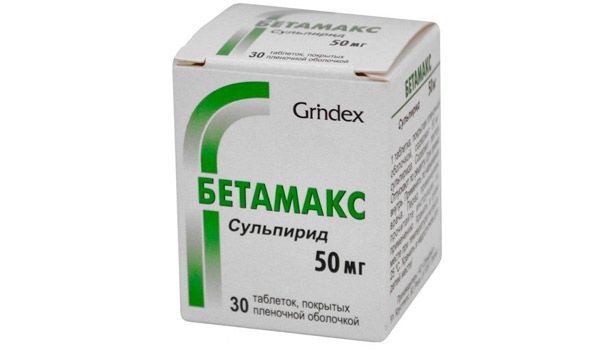
By inhibiting the transmission of signals by serotonin receptors (5-HT2B, 5-HT2C, 5-HT3, 5-HT4) located in the tissues of the gastrointestinal tract, which control the motility and muscle tone of the digestive system, the active substance of the drug Betamax helps reduce the intensity of pain and alleviate the condition of patients with gastric ulcers.
The drug has contraindications: hypertension, epilepsy, pregnancy and age under 14. And the list of side effects includes skin allergies, dizziness, sleep disorders, as well as increased blood pressure, a feeling of dry mouth, heartburn, constipation, hyperhidrosis, etc.
Like stomach ulcer tablets, this neuroleptic drug – along with other pharmaceutical drugs – must be prescribed by a doctor.
Attention!
To simplify the perception of information, this instruction for use of the drug "Pills for stomach ulcers" translated and presented in a special form on the basis of the official instructions for medical use of the drug. Before use read the annotation that came directly to medicines.
Description provided for informational purposes and is not a guide to self-healing. The need for this drug, the purpose of the treatment regimen, methods and dose of the drug is determined solely by the attending physician. Self-medication is dangerous for your health.

